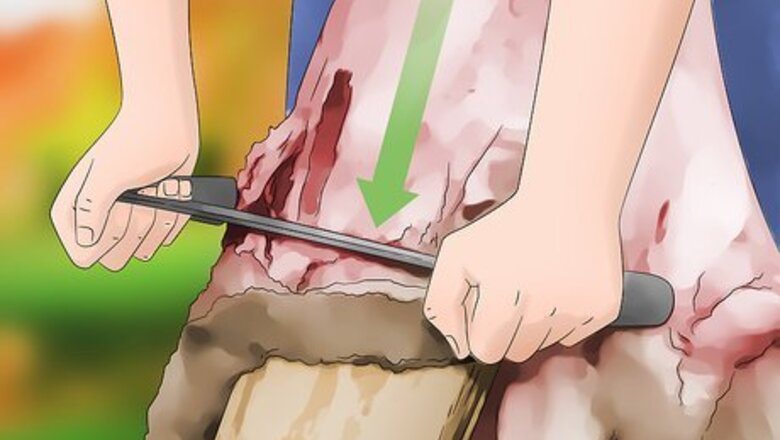
views
Tanning a Hide With an Acid Solution
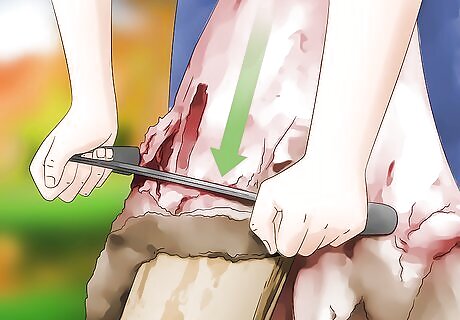
Remove all flesh and fat from the deer skin. Do this after the skin has cooled and you are able to lay it out on a flat rock or cool concrete. Use a knife or a flesher to remove every little bit. It's very important to get all of the flesh off of the hide so that it doesn't begin to rot. Don't wait too long to flesh the hide after you've skinned the deer. If the hide begins to decompose it won't hold up during the tanning process. Use a fleshing tool intended for scraping flesh from a hide, rather than a knife. Sharp tools could pierce the hide and damage it.
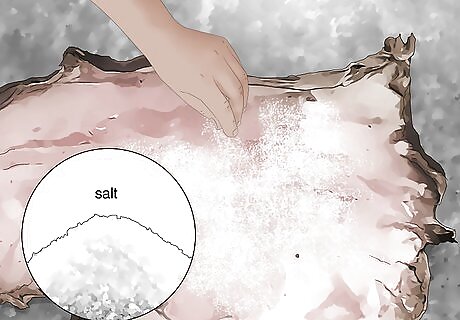
Rub the deer pelt with non-iodized salt (sea salt). Make sure you put down a fairly thick layer of salt to draw out the moisture from the pelt. Use 3-5 pounds of salt, depending on how large the hide is. The salting process takes a day or two if the proper amount of salt is used. Keep adding salt to the hide until it dries out and becomes crispy. Cover wet areas of the hide with more salt.
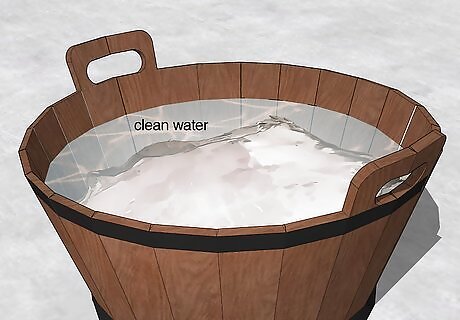
Soak the hide in water. Before you use the brine solution, soak the hide in clean water until it is soft and flexible. This helps it absorb the tanning chemicals. Peel off the dried inner skin from the hide.
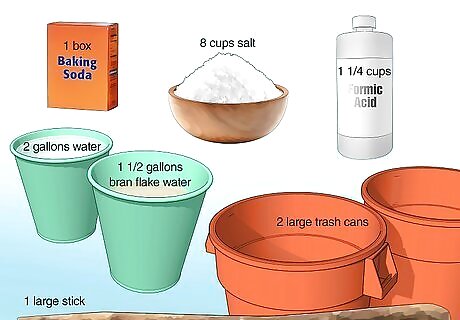
Get ingredients to make the brining solution. This solution relaxes the hide and helps to preserve it, an essential step in the tanning process. Here's what you'll need: 2 gallons water 1 1/2 gallons bran flake water (Make this by boiling 1 1/2 gallons of water and pouring it over a pound of bran flakes. Let the mixture sit for one hour, then strain and reserve the water.) 8 cups salt (not iodized) 1 1/4 cups formic acid 1 box baking soda 2 large trash cans 1 large stick, for stirring and moving hides

Tan the hide. Put the salt in a trash can and pour 2 gallons of boiling water inside. Add the bran flake water and stir until the salt has completely dissolved. Add the formic acid. Put the hide in the trash can, punching it down with the stick to make sure it is completely covered in liquid. Let it soak for 40 minutes. Remove the hide from the brining solution and drain. Make sure you wear gloves and take other precautions to prevent getting burned from the acid.
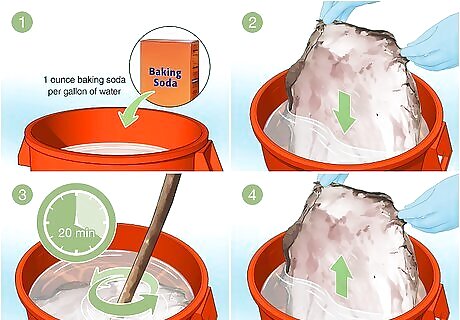
Neutralize the brine. Mix an ounce of baking soda for every 1 gallon (3.8 liters) of water needed to cover the hide in a large garbage can. Place the hide in the neutralizing solution, and stir for 20 minutes. Remove the hide from the neutralizing solution, rinse, and drain.
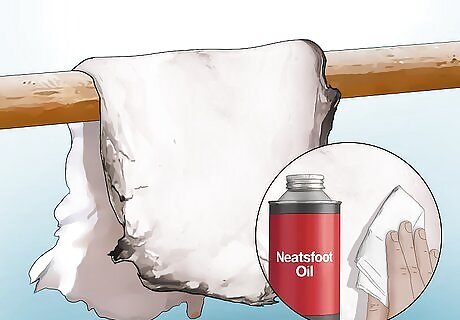
Oil the hide. Remove the hide from the rinse and hang over a beam to drain. Rub it with neat's foot oil to condition the skin.
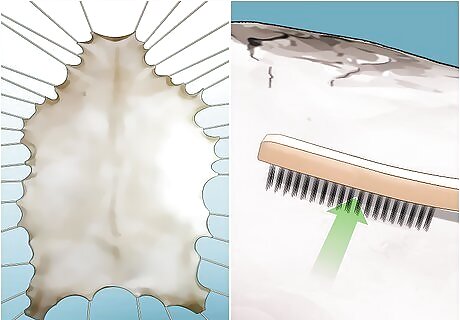
Stretch the hide. Hang the hide on a stretcher or hide dryer to finish the process. Place it in a place out of the sun to dry. After a few days the hide should feel dry and flexible. Take it down from the rack and go over the skin side with a wire brush until it has a suede-like appearance. Let the hide finish drying until it is fully dry, which should take a few more days.
Tanning a Hide Using the Deer's Brain Oils
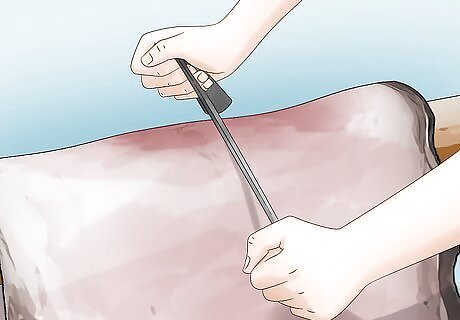
Flesh the hide. The first part of the tanning process is always scraping off all bits of flesh and fat from the skin. It helps to place the hide on either a fleshing beam or a garbage bag or tarp on the ground. Scrape all pieces of flesh and fat off the hide with a fleshing tool.
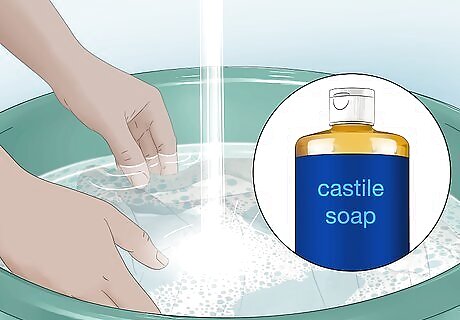
Rinse the hide. Wash it down with clean water to remove the dirt, blood and bits of flesh. You can use some castile soap or another type of soap made from natural substances to help loosen the grit.
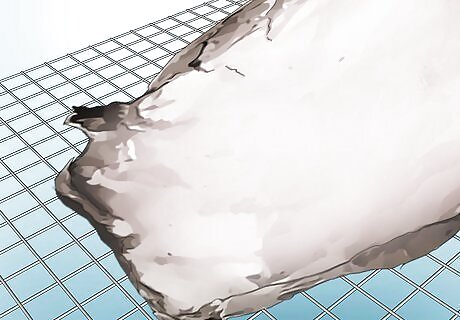
Let the hide dry out. Attach the hide to a drying rack and set it out for a few days to let it dry before you begin soaking it in tanning fluids. Drying racks can be purchased at game shops. These wooden structures are useful for holding the hide in place while it dries. The hide should be stretched across the drying rack, rather than simply hung up. Otherwise the edges will curl.
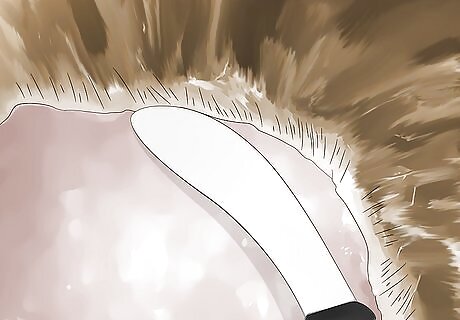
Remove the hair. Use a rounded steel blade with a handle or a traditional elk antler hide scraper to scrape the hide from the skin against the grain. This helps the tanning solution absorb more thoroughly into the hide. Take care not to tear the skin where it is thinner in the belly area.
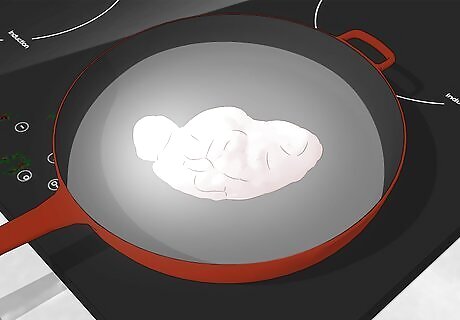
Make the tanning solution. Place the deer's brain and a cup of water in a saucepan. Cook the mixture until the brain breaks down and turns to liquid. The mixture should resemble a soup. Blend it so that it's completely smooth and lump-free.
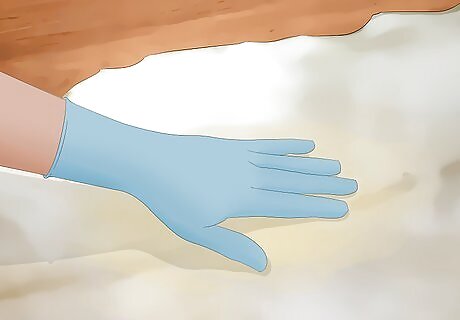
Tan the hide. First wash the hide with water once more, to remove any last bits of hair or debris and make the hide more malleable. Squeeze it out between two towels to extract the excess moisture. Now pour some of the brain mixture on the hide and rub it in with your hands. Rub an even amount of the mixture over the entire hide, covering every inch. You can use gloves to apply the tanning mixture if you'd prefer not to use your bare hands. When you're finished applying the tanning solution, roll up the hide and place it in a large food storage bag or freezer bag. Put it in the refrigerator for 24 hours to give the brains time to soak in.
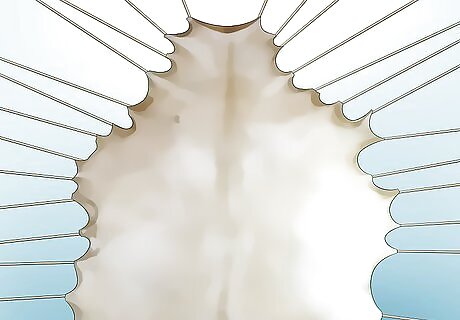
Soften the hide. To keep the hide from getting too stiff, it's necessary to soften it by working it and pulling at the edges. Take it out of the refrigerator and place it back on the drying rack. Wipe off the excess brain mixture with a cloth. Use a large stick to soften the hide by running it back and forth across the skin until it becomes soft and pliable. You can also use a heavy rope to soften the hide. Another way to soften it is to take it off the drying rack and worth with a partner to run it back and forth across a log or bench.
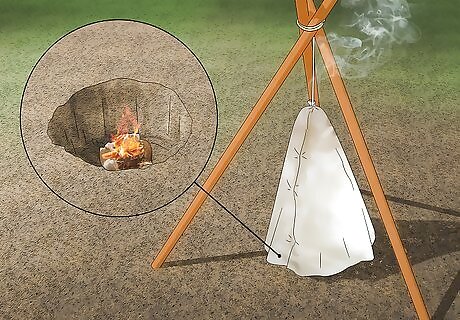
Smoke the hide. This is the last step in the natural tanning process. Sew the hide up the sides to create a bag. Close one end so that it is tight enough to keep smoke inside. Dig a hole about ⁄2 foot (0.2 m) deep and 1 foot (0.3 m) across, and place the open end of the hide bag over the hole, with the top propped up by sicks, tee-pee style. Build a small fire inside the bag, in the hole, so that the smoke from the fire will rise and smoke the skin. When the flames have died down and the fire begins to smoke, add smoke chips to the fire to create more smoke and keep it alive. Close the open part and leave a small vent through which you can add more fuel to the fire. After half an hour, turn the bag inside out and smoke the other side.




















Comments
0 comment